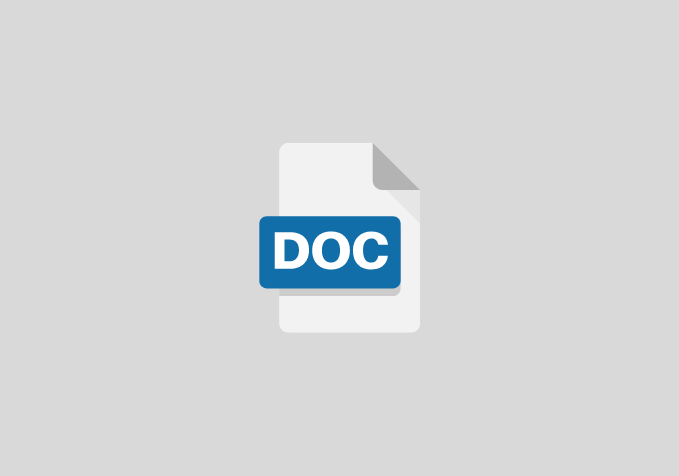Research Proposal: The United Nations Sustainable Development Goal (SDGS) and Women’s Political Participation in Iran (2015-2021)
Objective of the Study
The main objective of this study is to investigate the United Nations Sustainable Development Goals (SDGs) and women’s political participation in Iran (2015-2021). Specific objectives of this study will include to:
- Investigate the level of participation of women in the socio-political development of Iran.
- Examine the impact of women’s empowerment on the socio-political development of Iran.
- Assess the opportunities, barriers and perspectives of socio-political participation of women in Iran.
Literature Review
Conceptual Review
The Sustainable Development Goals (SDGs)
The world pledges to realise the 17 Sustainable Development Goals by 2030 as a unified and interconnected set of global goals (Fig-1). The SDGs address the most serious global issues of our day, building on the successes of their predecessors the MDGs and requiring cooperative partnerships between nations to balance the three pillars of sustainable development, economic growth, environmental sustainability, and social inclusion (The United Nations, 2020).
SDGs also known as the Global Goals are a universal call to action to end poverty and gender discrimination, protect the planet and ensure that all people enjoy peace and prosperity in years to come. These 17 Goals build focuses on areas such as climate change, gender inequality, innovation, sustainable consumption, peace and justice, among other priorities. The goals are interconnected – often the key to success on one will involve tackling issues more commonly associated with another. The SDGs work in the spirit of partnership and pragmatism to make the right choices now to improve life, sustainably, for future generations. For all nations to adopt following their own goals and global environmental concerns, they set clear principles and targets. The SDGs represent a diverse agenda. They address the underlying causes of poverty and bring us all together to effect change that is good for the world and for people (UNDP, 2020).
Political Empowerment of Iranian Women
Political empowerment, according to UNESCO, would include the capacity to band together and advocate for change. As a result, a process of empowerment must incorporate not only individual knowledge but also collective awareness and action. To achieve social transformation, the idea of collaborative action is essential(UNESCO, 2020). An essential topic in the context of empowerment is women’s political participation. Women’s political participation, legal rights, and educational opportunities have all been highlighted as means of empowerment by Desai & Thakkar (2019). (Desai & Thakkar, 2019). According to traditional analysis, political involvement by women includes electoral politics-related behaviours like voting, campaigning, holding party office, and participating in elections. But in a broader sense, it encompasses all voluntary actions intended to influence the making of public policies, the administration of public affairs, and the choice of political leaders at all levels of government (Nayak & Mahanta, 2019).
In terms of political empowerment, the number of female lawmakers has consistently climbed during the 1990s. The regions where women’s representation increased by 30–50% between 1990–2009 were Latin America and the Caribbean, the Middle East and North Africa, and South Asia. Women still hold less than 10% of parliamentary seats, the lowest percentage of any area, despite significant developments and advancements in the political sphere in Middle Eastern and North African nations (World Bank, 2019). There are currently about 31 female heads of state or governments around the globe (Worldwide guide, 2019). It appears that numerous criteria, including literacy, financial standing, a liberal home environment, support from other family members, and a strong personality, are important and decisive in the election of women candidates. Few women can get on ballots, and even fewer of these few women candidates are elected because the majority of women lack access to the aforementioned issues. In January 2017, women in Iran were granted the right to vote (Shahidian, 2017). Since the 8th parliament, there has been an upsurge in the political engagement of Iranian women. As Vice President of Legal Affairs, Science, and Technology, Head of the Environment Protection Organization, and Head of the Center for Women’s Participation (CWP), the trend demonstrates the political presence of women in these positions (Shojaei, Samsu & Asayeseh, 2018). Three percent of the seats in the 10th Islamic Consultative Assembly’s parliament are held by women (Majlis). Nonetheless, throughout the past 50 years, no Iranian woman has ever served in an elected executive position (prime minister or president) (World Economic Forum, 2020).
References
- Amin, C. M.(2020). Propaganda and Remembrance: Gender, Education, and the WWomen’sAwakening of 1936. Iranian Studies32, no. 3: 351-86.
- Article 20. The Constitution of The Islamic Republic of Iran:’ The Rights of the people Iran: 1928.
- Burki, S.(2019). Politics of State Intervention: Gender Politics in Pakistan, Afghanistan, and Iran. Lanham, MD: Lexington Books.
- Desai N, & Thakkar U.(2019). Women in Indian Society. New Delhi: National Boo Trust.
- Gallaway J. H, Bernasek A.(2018). Literacy and women’s empowerment in Indonesia: policy implications Journal of Economic Issues. 2004;38(2):519–525. http://hdl.handle.net/10355/29697 .
- Nayak P, & Mahanta B.(2019). Women Empowerment in India. Munich Personal RePEc Archive. North Eastern Hill University. p. 33.
- Shahidian, H.(2017). The Education of Women in the Islamic Republic of Iran. Journal of WWomen’sHistory 2, no. 3: 6-38. doi:10.1353/jowh..0032.
- Shojaei S. N, Samsu K. H. K, & Asayeseh H.(2018). Women in politics: A case study of Iran. Journal of Politics and Law. ;3(2):257.
- Shukla, S. (2020). Research Methodology and Statistics. Ahmedabad: Rishit Publications.
- Sustainable Development Goals. (2018). United Nations Development Program. Retrieved from: http://unwomen.org/en/news/in-focus/women-and-the-sdgs
- United Nations Development Programme(2020) Empowered and Equal: Gender Equality Strategy 2008-2011. 2007. [Retrieved October 23, 2020]. from http://www.jposc.org/content/jpos/workshops/Bangkok/Gender-Equality-Strategy-2008-2019.pdf .
- United Nations Educational Scientific and Cultural Organization(2020). Women, Education and Empowerment: Pathways towards Autonomy. Report of the International Seminar. [Retrieved February 5, 2019]. from http://unesdoc.unesco.org/images/0010/001006/100662e.pdf .


